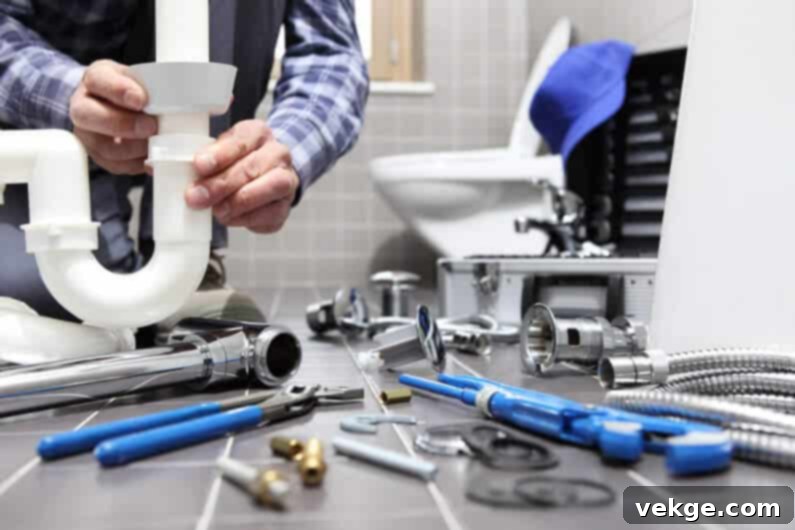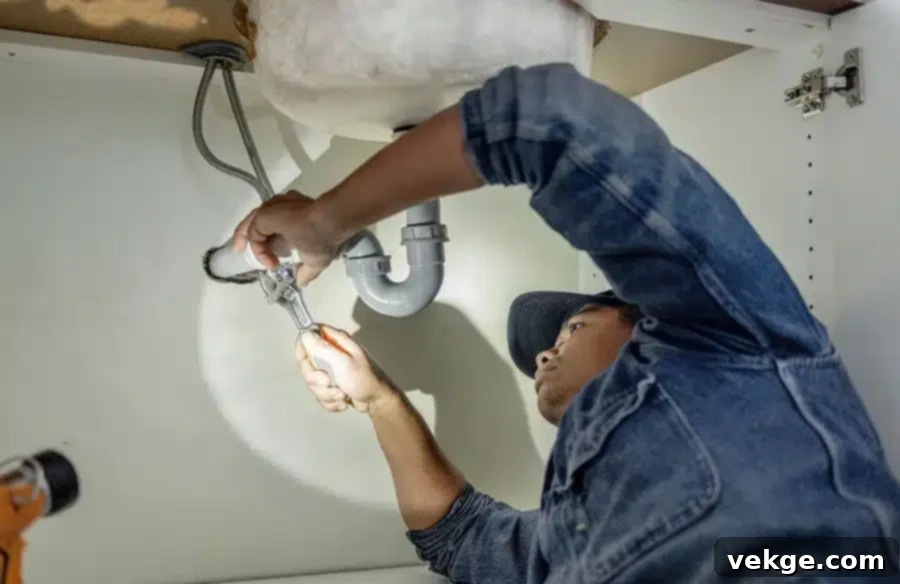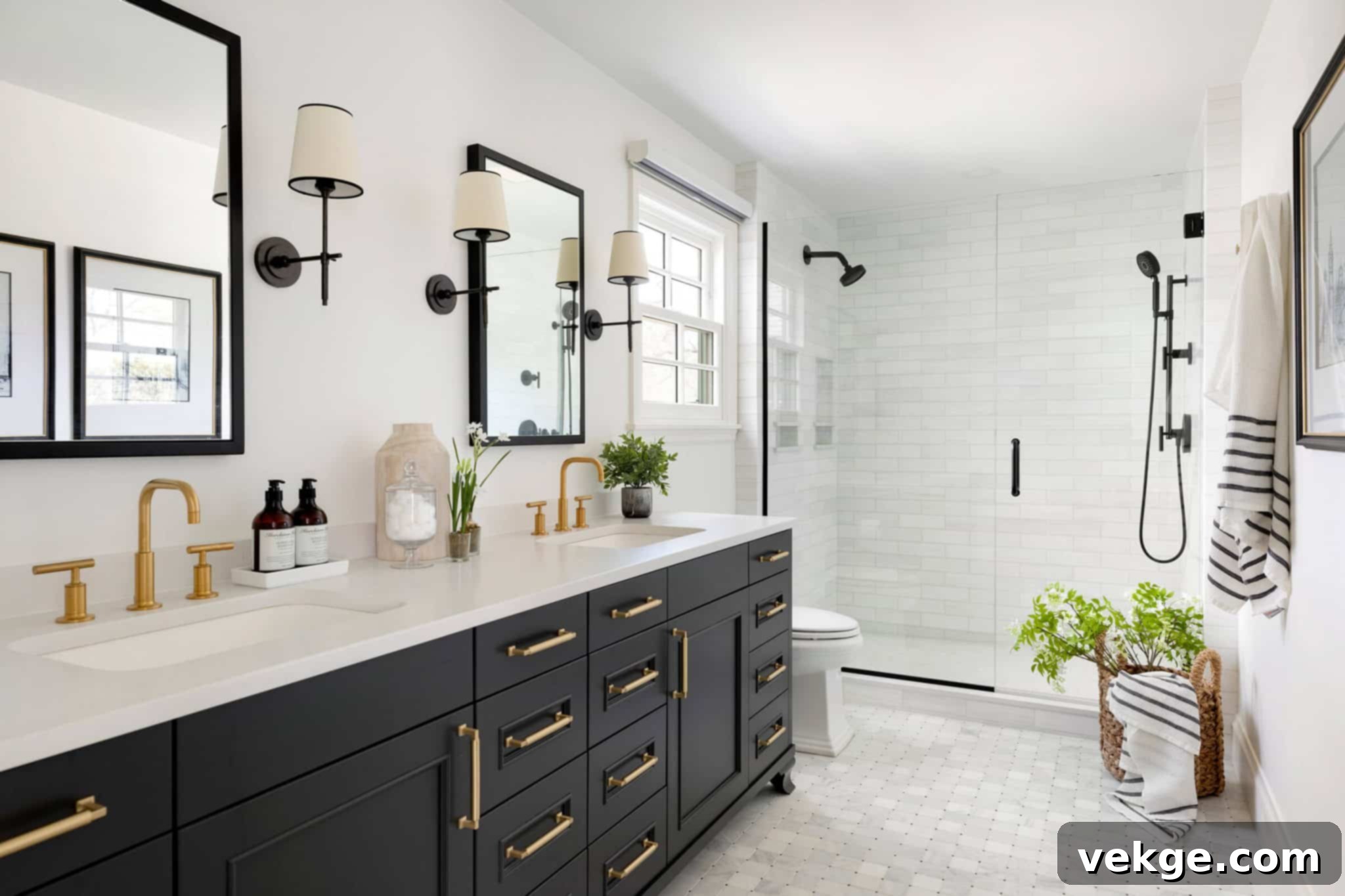Mastering Bathroom Remodeling Plumbing: Essential Considerations for a Flawless Renovation
A bathroom remodel is an exciting venture that promises to transform one of the most functional spaces in your home into a sanctuary of comfort and style. While aesthetics like tiles, vanities, and lighting often take center stage, the success and longevity of your renovation hinge significantly on one critical aspect: plumbing. Partnering with a competent plumbing professional is arguably the most vital decision you’ll make, as their expertise will guide you through the intricate details of plumbing systems, ensuring both functionality and compliance in your newly remodeled bathroom.
Understanding the underlying plumbing considerations from the outset can save you time, money, and headaches down the line. It’s about more than just moving a toilet or installing a new shower; it’s about optimizing your home’s water systems for efficiency, reliability, and modern living. Let’s delve into some significant factors that every homeowner needs to consider while remodeling a bathroom to achieve the desired, long-lasting results.
Relocating Your Plumbing Fixtures: A Strategic Decision

One of the most impactful decisions during a bathroom remodel is whether to relocate existing plumbing fixtures such as the toilet, sink, or shower. While it might seem like a simple design choice, moving these connections can be significantly more costly and complex than keeping them in their original positions. The reason lies in the extensive labor and material required to re-route water supply lines, drainage pipes, and vent systems, which are often hidden within walls and floors.
Before committing to a new layout, you must determine the feasibility and potential implications of relocating fixtures. Consider practical questions: How far will your new shower be from the hot water tank? Longer runs mean more time for hot water to reach the tap, potentially wasting water and energy. In such cases, installing a recirculation pump near your showerhead might be a worthwhile investment to provide instant hot water, but this adds to the project’s complexity and cost. Furthermore, any significant relocation of plumbing lines requires meticulous planning to ensure proper water pressure, drainage, and adherence to local building codes.
Relocating plumbing fixtures to match new configurations will inevitably make the bathroom remodeling project more time-consuming and expensive. If you find that the perceived value of relocating a fixture doesn’t justify the significant investment, exploring alternative design solutions that work within the existing plumbing footprint can be a smart move. An experienced plumber can expertly assess your current plumbing systems, advise on the best course of action, and suggest fixtures with customizable components that offer flexibility without requiring major pipe re-routing.
Should You Invest in Larger Drains and Optimized Water Flow?
If your current bathroom has been plagued by frequent clogs, slow drainage, or an outdated system struggling to keep up, a bathroom remodeling project presents an invaluable opportunity to address these issues head-on. Investing in wider drains and possibly larger toilets can significantly enhance the functionality and efficiency of your plumbing system, especially when integrating modern plumbing appliances.
Contemporary showers often feature higher flow rates, and luxurious soaking tubs demand efficient drainage. If your existing drain lines are narrow or made of older materials prone to buildup, they simply won’t be able to handle the increased water volume effectively. Upgrading to larger diameter pipes, typically PVC or PEX, provides a smoother, more resilient pathway for wastewater, drastically reducing the likelihood of clogs and ensuring a seamless experience. This proactive step future-proofs your bathroom, ensuring it can accommodate both current and future plumbing innovations.
Similarly, when selecting a new toilet, consider models designed for efficiency and powerful flushing. Modern toilets often come with features like dual-flush technology, offering options for liquid or solid waste, which conserves water without compromising performance. Pairing these with optimized drains ensures that your entire waste removal system works harmoniously, contributing to a more functional and enjoyable bathroom makeover.
Hiding Your Plumbing Lines or Allowing Them to Be Visible: An Aesthetic and Practical Choice

From the smallest vanity pipes to the complex network feeding your shower, every plumbing system relies on proper connections. Homeowners often face a design dilemma: should plumbing lines be hidden for a clean, minimalist look, or can they be exposed, perhaps even as a design feature?
Hiding vanity pipes within cabinetry or tucking shower and bathtub pipes between interior and exterior walls creates a sleek, uncluttered appearance. This is a popular choice for those aiming for a seamless and serene bathroom environment. However, the main drawback of concealed plumbing is that potential issues, such as damaging leaks, also remain hidden. By the time a leak becomes apparent (e.g., through water stains on ceilings below or damage to drywall), it may have caused significant, costly damage that could have been mitigated if detected earlier. Furthermore, accessing hidden pipes for maintenance or repair is a more involved and expensive process, often requiring opening up walls or floors.
Conversely, allowing some plumbing elements to be visible can be a deliberate design choice, especially in industrial or modern aesthetic schemes. Exposed copper pipes, for instance, can add character and texture. The practical benefit of visible plumbing is easier access for leak detection and maintenance. While full exposure might not appeal to everyone, strategic placement or the use of access panels can offer a balance between aesthetics and practicality. Discussing these options with your plumber and designer can help you strike the right balance for your home.
Consider Structural Challenges in Plumbing Placement
Before finalizing the location of any new or relocated fixture, it is crucial to consider the potential structural challenges that your plumber might face. The existing framework of your home – including floor joists, wall studs, and load-bearing walls – can significantly impact plumbing possibilities. For example, installing a heavy cast-iron bathtub in a location where the gap between floor joists is too tight, or where the joists run perpendicular to the desired drain line, can create significant onsite problems. Confined spaces can prevent plumbers from making proper pipe connections, leading to compromised systems or requiring costly structural modifications.
However, if your desired layout presents limited options, innovative solutions are often available. Freestanding tubs, for instance, offer a versatile and often simpler installation process compared to built-in or alcove tubs. Their compact drain mechanisms are designed to fit more easily within existing joist spaces or smaller openings, reducing the need for extensive structural alterations. This not only makes them a more cost-effective choice in many remodeling scenarios but also allows you to focus more on different design elements and less on complex structural modifications. Always consult with experienced professionals, like Sarasota plumbers, before making such installations to ensure proper support and drainage.
Beyond tubs, structural elements can also affect shower pan installation (especially for curbless designs), toilet placement (requiring specific drain line access), and even the routing of supply lines through walls. A comprehensive structural assessment by a qualified contractor or plumber in the early planning stages is vital to avoid unexpected complications and budget overruns.
Reconsidering and Upgrading Plumbing Fixtures During the Remodeling Project

A bathroom remodel is the perfect opportunity to upgrade your plumbing fixtures, enhancing both the functionality and aesthetic appeal of your space. Discussing upgrade options with your bathroom remodeler and plumber can unveil the best solutions for your needs and budget. Here are some popular and impactful upgrades to consider:
A Curbless Shower: Accessibility and Modern Design
Increasingly popular for its sleek aesthetic and universal accessibility, a curbless shower offers a seamless transition from the bathroom floor directly into the shower area. This design is excellent for aging-in-place strategies and gives the bathroom a more spacious feel. However, installing a curbless shower requires precise planning and professional knowledge to ensure proper slope for drainage and effective waterproofing. Improper measurements or installation can lead to significant water dripping issues outside the shower area, making professional expertise non-negotiable for this upgrade.
Showerheads: Personalize Your Shower Experience
Replacing showerheads is a relatively easy upgrade that can dramatically alter your daily routine. With an array of styles and functionalities available, you can choose a model that perfectly meets your needs. Options range from luxurious rain showerheads, invigorating massage jets, and versatile handheld units. Some advanced fixtures even offer multiple showerheads or fixed units with customizable flow settings, allowing for a personalized and luxurious showering experience. A single shower system may even incorporate various types of showerheads, controlled by a diverter, to cater to different preferences.
Lavatory Sink: The Focal Point of Your Vanity
The lavatory sink is a central feature of your bathroom vanity and comes in diverse types, each offering a distinct aesthetic and functional benefit. Traditional recessed sinks (undermount or drop-in) integrate smoothly into the countertop, creating a classic and clean bathroom setup. On the contrary, vessel sinks, which sit atop the counter, become a prominent design statement, serving as a central point in a modern or eclectic bathroom. Consider materials like porcelain, ceramic, stone, or even glass, and pair your choice with a faucet that complements its style and functionality.
P-traps: The Unsung Heroes of Hygiene
P-traps, the U-shaped pipes located under your water fixtures, are essential components of any plumbing system. Their primary function is to trap a small amount of water, creating a barrier that prevents noxious sewer gases from entering your bathroom through the drains. Plumbers universally recommend installing high-quality P-traps to ensure reliable and consistent performance, maintaining a hygienic and odor-free environment. While often hidden, exposed P-traps in attractive finishes like chrome or brushed nickel can contribute to a deliberate design aesthetic in modern bathrooms.
Shower Systems: Precision Control for Comfort
Upgrading your entire shower system can transform your daily wash into a spa-like experience. Two primary types of shower systems offer different control mechanisms: pressure-balanced and thermostatic. Pressure-balanced models are designed to prevent sudden temperature fluctuations caused by changes in water pressure elsewhere in the house, offering an anti-scald safety feature. Thermostatic shower systems, on the other hand, allow for precise regulation of water temperature, maintaining your desired warmth regardless of pressure changes. Both systems have their merits and demerits based on your specific needs, preferences, and lifestyle. Some advanced systems even incorporate smart technology for digital temperature control, pre-set programs, and water-saving features.
Body Jets: Therapeutic Water Massage
Installing body jets is a growing trend in many modern homes, offering a luxurious and therapeutic element to the shower experience. These devices are typically fitted into the shower walls and deliver horizontal sprays of water, providing a stimulating massage. When professionally installed, there is no risk of disruption to your shower tiling or walls. Body jets require careful planning regarding water pressure and additional plumbing lines, so consulting with your plumber on placement and system requirements is key to enjoying their full benefits.
Toilets: Efficiency and Comfort
Beyond larger drains, consider upgrading your toilet to a modern, water-efficient model. Dual-flush toilets offer different water volumes for liquid and solid waste, significantly reducing water consumption. Comfort-height toilets are also popular, providing a taller bowl that is easier for many adults to use. Smart toilets with bidet functions, heated seats, and self-cleaning features can further enhance hygiene and luxury.
Faucets: Style and Water Conservation
New faucets for your sink and shower can dramatically update your bathroom’s look. Beyond aesthetics, consider water-saving aerators that reduce flow without compromising pressure. Touchless faucets offer enhanced hygiene, while single-handle designs provide ease of use. Various finishes, from polished chrome to matte black, allow for seamless integration with your overall design scheme.
Bathroom Remodeling: Call the Best Plumbers for Expert Guidance
The intricate world of bathroom plumbing requires a skilled hand and an experienced eye. Professional and efficient plumbers possess the expertise to provide you with the best guidance on remodeling your bathroom plumbing fixtures. Their knowledge extends beyond mere installation; they understand local building codes, structural limitations, and the most effective ways to integrate modern fixtures for optimal performance and longevity.
By engaging a professional from the early stages of your project, you ensure that your bathroom will not only look beautiful but also function flawlessly, offering enhanced value and comfort for years to come. Plumbers ensure proper pipe connections to all your bathroom appliances, preventing leaks, maintaining water pressure, and ensuring efficient drainage.
The overall cost of plumbing services may vary significantly based on the complexity of your chosen plumbing systems, the extent of fixture relocation, and the quality of materials. To get an accurate assessment and the best recommendations, it’s always advisable to let a professional, such as a Plumber Columbus or your local trusted expert, check your bathroom layout. They can assess your existing infrastructure, discuss your vision, and recommend the most suitable and efficient plumbing fixtures and solutions tailored to your unique needs and budget.
Investing in quality plumbing and professional installation is an investment in your home’s future, ensuring peace of mind and a truly functional, beautiful bathroom.
